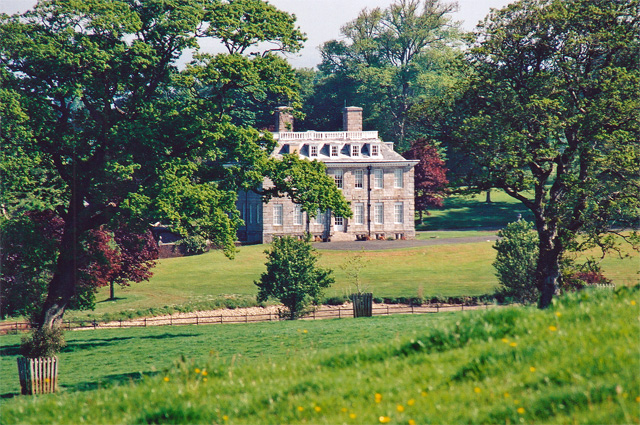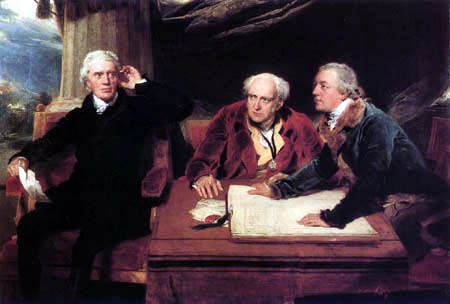|
Mothecombe
Mothecombe is an historic estate in the parish of Holbeton in South Devon, England. The mansion house of the estate is Mothecombe House, a grade I listed building in the Queen Anne style. History The estate of Mothecombe was inherited by John Pollexfen (fl.1620) of Kitley in the parish of Yealmpton, Devon, on his marriage to the daughter and heiress of Stretchley of Mothecombe. The surviving Mothecombe House was built by his great-great grandson John Pollexfen in about 1720. He was the son of Warwick Pollexfen of Mothecombe by his wife Elizabeth Osborne, daughter of John Osborne of Churchstowe in Devon. Warwick Pollexfen was the younger son of John Pollexfen (born 1619) of nearby Kitley in the parish of Yealmpton, Devon. In 1872 it was acquired by Henry Bingham Mildmay (d.1905) of nearby Flete House in the parish of Holbeton and of Shoreham Place in Kent, a partner in Barings Bank Barings Bank was a British merchant bank based in London, and one of England's List of oldest ban ... [...More Info...] [...Related Items...] OR: [Wikipedia] [Google] [Baidu] |
Holbeton
Holbeton is a civil parish and village located 9 miles south east of Plymouth in the South Hams district of Devon, England. At the 2001 census the parish had a population of 579, down from 850 in 1901. By 2011 it had increased to 619. The southern boundary of the parish lies on the coast (at Bigbury Bay), and it is surrounded clockwise from the west by the parishes of Newton and Noss, Yealmpton, Ermington, Modbury, and on the opposite bank of the ria of the River Erme, Kingston. The village, set back from the wooded shores of the river, is accessed by minor roads south of the A379 road, between the villages of Modbury and Yealmpton. Within the parish, north of the village, is the hamlet of Ford. History To the east of the village is an Iron Age enclosure or hill fort known as Holbury. Historically the parish formed part of Ermington Hundred and it contains several historic estates. Flete House is situated in a large park and was formerly the seat of Baron Mildmay of Flete. T ... [...More Info...] [...Related Items...] OR: [Wikipedia] [Google] [Baidu] |
Yealmpton
Yealmpton () is a village and civil parish in the English county of Devon. It is located in the South Hams on the A379 Plymouth to Kingsbridge road and is about from Plymouth. Its name derives from the River Yealm that flows through the village. At the 2001 census, it had a population of 1,923, falling to 1,677 at the 2011 census. There is an electoral ward of the same name. The population of this ward in 2011 was 2,049. Yealmpton is home to a 400-year-old stone cottage, where it is said a version of the famous rhyme Old Mother Hubbard was written. It is also the site of Kitley Caves, including the now closed Kitley Show Cave, where green marble was quarried; there is an arch of it in the British Museum. John Pollexfen Bastard (1756–1816) a British Tory politician, landowner and colonel of the East Devonshire Militia, lived at Kitley House, Yealmpton. Parish church The parish church is dedicated to St Bartholomew and was designed by William Butterfield. It dates from 1850, ... [...More Info...] [...Related Items...] OR: [Wikipedia] [Google] [Baidu] |
Listed Building
In the United Kingdom, a listed building or listed structure is one that has been placed on one of the four statutory lists maintained by Historic England in England, Historic Environment Scotland in Scotland, in Wales, and the Northern Ireland Environment Agency in Northern Ireland. The term has also been used in the Republic of Ireland, where buildings are protected under the Planning and Development Act 2000. The statutory term in Ireland is " protected structure". A listed building may not be demolished, extended, or altered without special permission from the local planning authority, which typically consults the relevant central government agency, particularly for significant alterations to the more notable listed buildings. In England and Wales, a national amenity society must be notified of any work to a listed building which involves any element of demolition. Exemption from secular listed building control is provided for some buildings in current use for worship, ... [...More Info...] [...Related Items...] OR: [Wikipedia] [Google] [Baidu] |
Nikolaus Pevsner
Sir Nikolaus Bernhard Leon Pevsner (30 January 1902 – 18 August 1983) was a German-British art historian and architectural historian best known for his monumental 46-volume series of county-by-county guides, ''The Buildings of England'' (1951–74). Life Nikolaus Pevsner was born in Leipzig, Saxony, the son of Anna and her husband Hugo Pevsner, a Russian-Jewish fur merchant. He attended St. Thomas School, Leipzig, and went on to study at several universities, Munich, Berlin, and Frankfurt am Main, before being awarded a doctorate by Leipzig in 1924 for a thesis on the Baroque architecture of Leipzig. In 1923, he married Carola ("Lola") Kurlbaum, the daughter of distinguished Leipzig lawyer Alfred Kurlbaum. He worked as an assistant keeper at the Dresden Gallery between 1924 and 1928. He converted from Judaism to Lutheranism early in his life. During this period he became interested in establishing the supremacy of German modernist architecture after becoming aware of Le ... [...More Info...] [...Related Items...] OR: [Wikipedia] [Google] [Baidu] |
John Lambrick Vivian
Lieutenant-Colonel John Lambrick Vivian (1830–1896), Inspector of Militia and Her Majesty's Superintendent of Police and Police Magistrate for St Kitts, West Indies, was an English genealogist and historian. He edited editions of the Heraldic Visitations of Devon and of Cornwall,Vivian, p. 763, pedigree of Vivian of Rosehill standard reference works for historians of these two counties. Both contain an extensive pedigree of the Vivian family of Devon and Cornwall, produced largely by his own researches. Origins He was the only son of John Vivian (1791–1872) of Rosehill, Camborne, Cornwall, by his wife Mary Lambrick (1794–1872), eldest daughter of John Lambrick (1762–1798) of Erisey, Ruan Major, and co-heiress of her infant brother John Lambrick (1798–1799). His maternal grandmother was Mary Hammill, eldest daughter of Peter Hammill (d. 1799) of Trelissick in Sithney, Cornwall, the ancestry of which family he traced back to the holders of the 13th century French title Comt ... [...More Info...] [...Related Items...] OR: [Wikipedia] [Google] [Baidu] |
Heraldic Visitation
Heraldic visitations were tours of inspection undertaken by Kings of Arms (or alternatively by heralds, or junior officers of arms, acting as their deputies) throughout England, Wales and Ireland. Their purpose was to register and regulate the coats of arms of nobility, gentry and boroughs, and to record pedigrees. They took place from 1530 to 1688, and their records (akin to an upper class census) provide important source material for historians and genealogists. Visitations in England Process of visitations By the fifteenth century, the use and abuse of coats of arms was becoming widespread in England. One of the duties conferred on William Bruges (or Brydges), the first Garter Principal King of Arms, was to survey and record the armorial bearings and pedigrees of those using coats of arms and correct irregularities. Officers of arms had made occasional tours of various parts of the kingdom to enquire about armorial matters during the fifteenth century. However, it was ... [...More Info...] [...Related Items...] OR: [Wikipedia] [Google] [Baidu] |
Flete House
Flete House is a Grade I listed country house at Holbeton, in the South Hams region of Devon, England. History With roots in Saxon times, the Manor of Flete was held by the Damarell family from 1066 until the time of Edward III. The earliest part of the house dates from the sixteenth century, and was substantially rebuilt around 1620 for Sir Charles Hele. The Hele family held the house until 1716, when the estate passed to the Bulteels. Additions were made to the house in both the early and the late eighteenth century. The house was heavily remodelled in the Gothic style in 1835 by John Crocker Bulteel, which obliterated the early and late eighteenth century classical work and added castellations. In 1878 the architect Richard Norman Shaw undertook extensive building works for Henry Bingham Mildmay, remodelling and extending the house, while retaining the sixteenth/seventeenth century house to the south west. Flete House was used by the City of Plymouth as a maternity hospital ... [...More Info...] [...Related Items...] OR: [Wikipedia] [Google] [Baidu] |
Barings Bank
Barings Bank was a British merchant bank based in London, and one of England's List of oldest banks in continuous operation, oldest merchant banks after Berenberg Bank, Barings' close collaborator and German representative. It was founded in 1762 by Sir Francis Baring, 1st Baronet, Francis Baring, a British-born member of the German-British Baring family of merchants and bankers. The bank collapsed in 1995 after suffering losses of £827 million (£ billion in ) resulting from fraudulent investments, primarily in futures contracts, conducted by its employee Nick Leeson, working at its office in Singapore. History 1762–1889 Barings Bank was founded in 1762 as the John and Francis Baring Company by Sir Francis Baring, 1st Baronet, with his older brother John Baring (1730–1816), John Baring as a mostly silent partner. They were sons of Johann Baring, John (né Johann) Baring, wool trader of Exeter, born in Bremen, Germany. The company started business in offices off Cheapsid ... [...More Info...] [...Related Items...] OR: [Wikipedia] [Google] [Baidu] |




